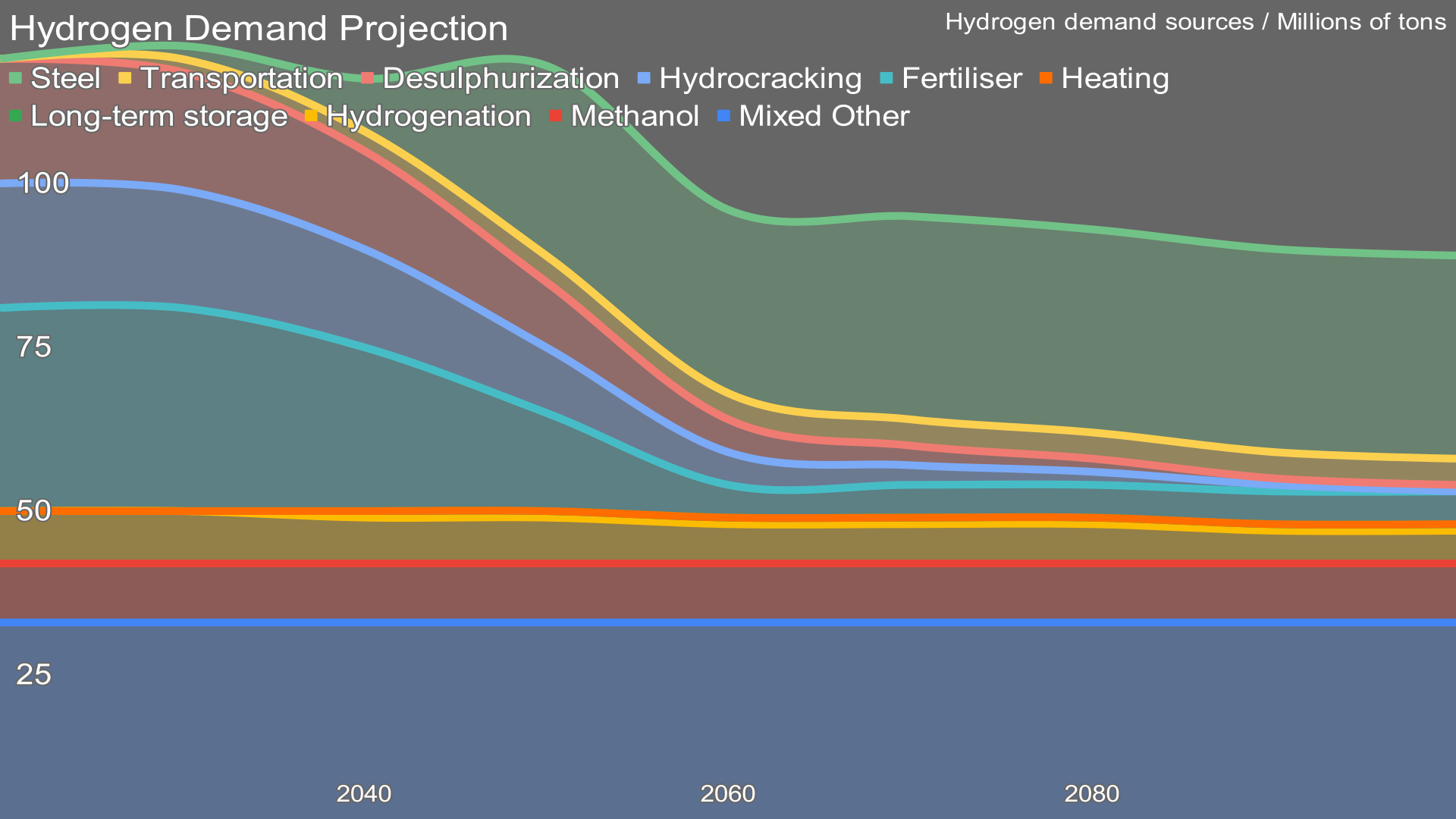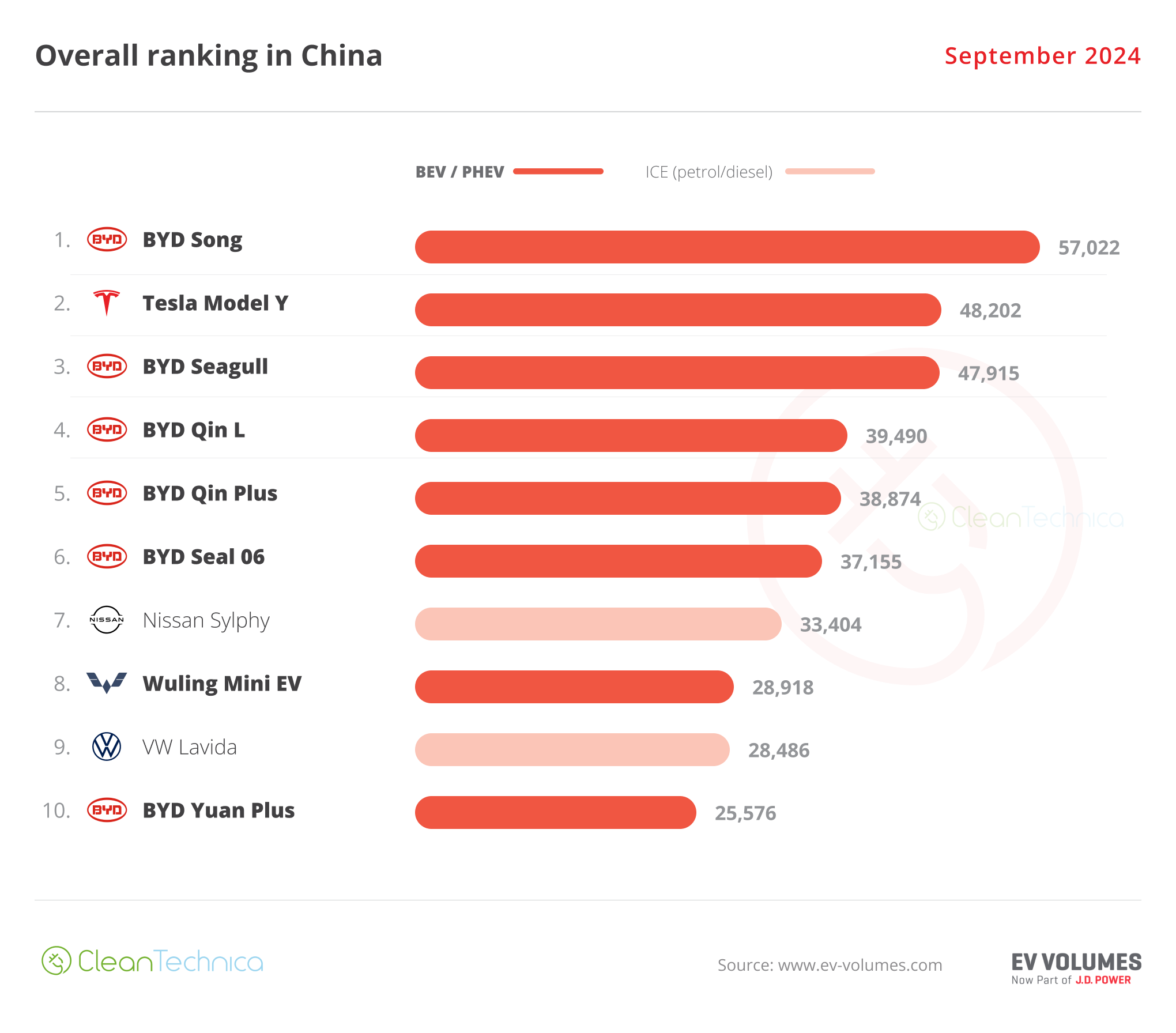
European energy policy makers apparently are taking a DNV report on offshore hydrogen manufacturing seriously. It doesn’t stand up to scrutiny, in either its assumptions or its conclusions.
Let’s start with this idea of offshore manufacturing of hydrogen at wind farms in the North Sea. It doesn’t make much sense on the surface (or below the surface), but it’s an idea which has traction. The premise is that instead of moving electrons to shore and putting them into currently constrained — and that’s an important factor — transmission to demand centers or doing electrolysis onshore, build a massive electrolysis plant offshore near the wind farm, move the electrons to it, then desalinate seawater and manufacture hydrogen with it, then pipe the hydrogen to shore with a brand spanking new pipeline.
There’s a rule of thumb for construction. Whatever something costs to build onshore, it costs 10x to build offshore and 100x to build on the ocean floor. (I’m unclear on whether it’s 1,000x or 10,000x to build it in orbit, but it’s one of those two, which is why orbital solar power beamed to earth remains a deeply stupid idea.) Oil and gas rigs have a value proposition for offshore labor, but of course that’s coming to an end. Fish farms have an economic value proposition for offshore labor. Shipping and fishing have non-stationary commercial value propositions. After that, the pickings get thin for commercial activities.
Offshore wind farms make sense because they are untended. They just sit there and spin. No operations labor offshore. Construction and maintenance are it. Humans touch them for a week or two a year. Maintaining a big staff 100 km+ from shore is not required.
Are there hands-free electrolysis facilities? No. A large-scale electrolysis facility is an industrial chemical processing plant with around 28 components. The desalination and pipeline compression units possibly double that. That’s a facility with significant full-time staff, including a night shift with likely reduced staffing. But offshore, that’s a full time staff that lives on the facility 24/7/300 and shift changes requiring a completely set of workers come on board. You don’t get inexpensive labor when you have to ferry or chopper staff to a rig 150 km offshore in the North Sea for 20 days at a time. You get much less expensive labor onshore where they can drive home at the end of their shifts.
Is this factored into the DNV models? Well, apparently the entire electrolysis facility requires no staff at all, as labor is never mentioned. Is it significant? Probably, but as there is zero analysis in the DNV report, it’s impossible to say. They just excluded it entirely.
This model assumes that an entire massive offshore wind farm 100 to 150 km offshore is built without being connected to shore with transmission. All of the electricity, instead of flowing through much less complex electricity management components and into an HVDC cable across the sea floor, goes to a new build permanent industrial facility in the middle of the North Sea. All the electricity makes hydrogen. A new pipeline is built to shore instead of just dropping an HVDC cable off a cable laying ship.
It’s quite remarkable that anyone takes this seriously, yet people are indeed taking this very seriously. But why?
Well, what the heck is DNV? Its reports get referenced a lot and are taken seriously by governments, so what is the provenance of the organization? Is it like the IEA with its 15 years of hilariously bad wind and solar reports? Is it credible? Is there perhaps a whiff of bias?
“DNV is the world’s largest classification society, providing services for 13,175 vessels and mobile offshore units (MOUs) amounting to 265.4 million gross tonnes, which represents a global market share of 21%. It is also the largest technical consultancy and supervisory to the global renewable energy (particularly wind, wave, tidal and solar) and oil and gas industries — 65% of the world’s offshore pipelines are designed and installed to DNV’s technical standards.”
Among DNV’s 12,000 employees are an awful lot of people who assume that moving molecules for energy is a requirement as opposed to a phase due to our fossil fuel economy. And among its executives and number-crunchers are a lot of people undoubtedly looking at a huge portion of their business disappearing as oil and gas disappear.
Remember, 40% of bulk shipping is of megatons of coal, oil, and gas. That’s going away. The ~3,500 oil tankers currently in operation are probably among the 13,000 vessels that DNV registers. Those mobile offshore units are drill rigs. DNV owns the lion’s share of offshore pipeline standards, and all of those pipelines currently carry oil and gas. A big chunk of its business is going away, unless DNV can replace it with hydrogen. So there are at least big portions of the company who are motivated thinkers.
DNV does a lot of good work, but like McKinsey, it often gets things badly wrong. It depends on the people doing the work and what they are tasked to do.
So, to the report itself. Did they find that making hydrogen offshore was deeply expensive? Yes. Did they then say that making hydrogen offshore was a bad idea?
“Producing hydrogen offshore should be considered as a priority for Europe”
Those are literally the first words of semantic content in the report, the lead sentence in the executive summary. What’s going on? A big part of what is going on is the assumptions in the report. It gets some basics right. It gets others wrong.
Let’s start with what it gets right. Refineries in Europe are half of total hydrogen demand today. Ammonia is about a third. None is used in transportation. They claim almost 4% is used for energy, but I’m unaware of any uses of hydrogen for energy anywhere, so I consider that unlikely.
With half of demand from refineries and refineries going away, do they project a decline in hydrogen demand? No, they project a multiplication of demand by seven times for their report, and DNV considers 14 times the demand to be required.

Hydrogen Demand Projection through 2100, chart by author
I’ve been iterating my hydrogen demand curves for a couple of years. This one is my latest, from my global steel demand and supply curves scenario, adjusted for total green steel demand at 59 kg of hydrogen per ton of new steel, with 75% of steel demand eventually met by scrapping, including most of the fossil fuel infrastructure, pipelines, tankers, and drill rigs.
There’s a bit of a gap between 7x to 14x increases vs a roughly 15% decline. Michael Liebreich thinks I’m too optimistic on a couple of the demand and technology areas, but his projection is only 200 million tons globally — 250 million if he’s feeling generous, per a recent chat with him.
Liebreich and I share units on this. We use millions of tons. Why is this significant? Because hydrogen is an industrial feedstock, not a unit of energy. So? Well, the DNV report uses TWh exclusively for hydrogen. Baked into its assumption is that hydrogen is dominantly a carrier of energy, although even its report says it isn’t one today.
Framing matters, and DNV is well into the hydrogen for energy bubble, or at least the primary authors of the report are. I won’t name them, but having reviewed their professional history, they mostly have long careers in oil and gas, and are mostly focused on hydrogen for energy today. Lots of groupthink, not a lot of critical thinking.
So what’s the conversion between their odd choice of TWh as a unit for a chemical feedstock? From their North Sea potential page, “This would provide a production capacity of around 297 TWh/a (LHV), which equals 8.9 Mton of hydrogen.”
What’s LHV? Lower heating value. What’s that? That’s the energy level that doesn’t remove water vapor from the hydrogen. Why is that important? Because you can’t leave water vapor in the hydrogen. What should they be using? HHV or higher heating value. It shows the more accurate and even lower efficiency of turning electricity and water into hydrogen. Why aren’t they using the more accurate number showing less efficiency? “The EU’s hydrogen strategy uses a convention of 40 GWH2 of hydrogen (LHV) at the output of the electrolyser.”
Yes, the entire EU hydrogen strategy is claiming better efficiencies for making hydrogen than will be the case in reality. Technology which condenses the water out of the hydrogen is part of the component stack in the balance of plant. It takes about 50 kWh of electricity to electrolyze a kilogram of water at the lower heating value. Getting rid of the water vapor takes about another 10 kWh, another 20% efficiency hit. The NREL makes this entire arm-waving pretty clear in one of its documents, but the European reference it cites was from 2002, when the higher and more accurate heating value was dominant for electrolysis. Apparently Europe has backslid on its attachment to empirical reality with energy, which isn’t surprising, given the hydrogen for energy hype that’s been going on.
But let’s play along. 297/8.9 is a ratio of of about 33:1. Their demand assertion for all of current European consumption is 285 TWh. By this ratio, what they are saying is that about 8.6 million tons of hydrogen is used in Europe today. The working number I use from other references is about 10 million tons, so this is in the ball park.
Let’s multiply that by seven, which is the demand ratio the DNV report uses. That suggests that Europe is going to require 60 million tons of hydrogen. Using DNV’s preferred 4,000 TWh, that’s 120 million tons of hydrogen. Europe is going to consume half of total global hydrogen consumption today just by itself, or even all of it?
For context, the total wind, water, and solar renewable capacity of the Earth in 2019 was just sufficient to manufacture the current hydrogen demand. This remarkable document is based on multiplying that by a factor of seven at minimum just to deliver hydrogen with no leftover electricity, and just for Europe. There’s no world in which this makes the slightest of sense unless you are deep into a bubble of groupthink. Yet European policy in multiple countries is currently based on this.
So, I mentioned that DNV found that the resultant hydrogen was expensive. How expensive?
Up to 100km distance from shore:
Value chain D: Offshore wind with HVAC transmission to onshore hydrogen production has the lowest LCOH in 2030 (€4.34 per kg) and 2040 (€3.68 per kg).
Value chain E: Offshore wind to offshore electrolysis with transport of hydrogen via offshore pipeline has the lowest LCOH in 2050 (€3.21 per kg).
At 150km distance from shore:
Value chain E: Offshore wind to offshore electrolysis with transport of hydrogen via offshore pipeline has the lowest LCOH in 2030 (€4.59 per kg), 2040 (€3.79 per kg) and 2050 (€3.24 per kg).
Sharp eyes will notice a few things in there. The first is the use of high voltage alternating current (HVAC) wind farm to shore transmission. That’s odd, as high voltage direct current (HVDC) has a breakeven point of 50 kilometers underwater. Why? HVAC creates a massive magnetic field that interacts with water very strongly, increasing resistance a lot and hence reducing efficiency. Picking HVAC as a transmission vector is suspect. Even their own numbers make it clear that HVDC is better, with cheaper capital expenditures and higher efficiency, so why is the HVAC option used for comparison?
But let’s look at the efficiencies they claim for HVDC. They peg it at 97% for 150 km. That’s odd, because the industry experience is 3% to 3.5% for 1000 km. They appear to be understating efficiency.
As a note on where the authors’ heads are at, the report uses “pipeline” 330 times, “HVDC” 21 times, and “HVAC” 23 times.
What efficiency do they claim for the pipeline, by contrast? 98.5%, higher than they have for HVDC. It’s quite remarkable when someone claims moving molecules over 100 kilometers is more efficient than moving electrons. And quite unlikely to be true in reality.
So, they use HVAC’s lower efficiency and higher capital costs as the worst case scenario, understate HVDC efficiencies, and overstate pipeline efficiencies. Not particularly credible. Of course, they really go to town on onshore electrolysis with solar farms.
What else might sharp eyes notice? Well, there’s the precision of their numbers. There exists no offshore electrolysis facility today. There are no undersea hydrogen pipelines, and precious few kilometers of hydrogen pipelines. These are projected costs from a top-down analysis for 2030 and 2050. Yet they are projecting down to the 100th of a euro the cost per kilogram with no error bars. Their numbers are based on these massive desalination, electrolysis, and pipeline compression plants getting much cheaper because one component of perhaps 60, the electrolyzer, will get cheaper.
But I promised expensive. Note that none of their numbers for manufacturing and transmitting hydrogen are below €3.00 per kilogram of hydrogen. The lowest number they cite is equivalent to US$3.50 per kilogram. The current cost of manufacturing unabated hydrogen from natural gas is about US$0.78 per kilogram, and that’s also the absolute best and deeply unrealistic case of Lazard’s levelized cost of hydrogen, so this is 4.5 times more expensive than current hydrogen, which we don’t use for energy because it’s too expensive. This is their best case number, with unrealistic assumptions littering their report.

How does this compare to the most expensive form of energy used today, liquid natural gas? Well, I did the start of the math on that when I looked at shipping hydrogen in liquified tankers a couple of years ago. A manufacturing only cost of US$0.78 per kilogram of hydrogen is 1.9 times as expensive as delivered liquid natural gas. US$3.50 per kilogram is approaching 10 times as expensive as the most expensive form of imported energy used today. And that’s before it’s distributed to anybody.
As a reminder, dirt cheap gray hydrogen in bulk today costs about US$10 per kilogram delivered, and US$15-20 at a pump. Distribution costs aren’t going to magically disappear, so hydrogen in the future will still be much more expensive than US$3.50 for any consumers of it.
In what world is something that in the best possible case with unrealistic assumptions that costs 10 times the most expensive form of imported energy considered reasonable as the basis for an energy policy? Well, inside the hydrogen bubble in the EU. That’s why it’s going to deflate and pop in the coming years. No one will buy energy that is this expensive.
They’ll electrify at vastly lower costs instead. They’ll use vastly cheaper biofuels that don’t require absurd new infrastructures. Massive HVDC electron pipelines will be built and pull power and energy throughout the EU and from further afield. Where hydrogen is required, it mostly will be electrolyzed at point of demand using grid electricity in the volumes and at the times the consuming process needs.
The DNV study is just another thick stack of Powerpoint slides that prove to anyone who cares to look that hydrogen for energy is a terrible idea. Even a firm as committed to hydrogen for energy as DNV is, using oil and gas analysts who won’t have a job if hydrogen doesn’t become a dominant energy carrier, can’t make it make sense in its reports, as hard as they try.
I don’t like paywalls. You don’t like paywalls. Who likes paywalls? Here at CleanTechnica, we implemented a limited paywall for a while, but it always felt wrong — and it was always tough to decide what we should put behind there. In theory, your most exclusive and best content goes behind a paywall. But then fewer people read it! We just don’t like paywalls, and so we’ve decided to ditch ours. Unfortunately, the media business is still a tough, cut-throat business with tiny margins. It’s a never-ending Olympic challenge to stay above water or even perhaps — gasp — grow. So …




